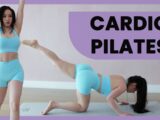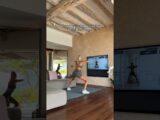
The ONLY 2 Exercises for Wider Biceps
August 15, 2025In order to get wider biceps, especially when you viewed from the front, you are actually going to want limit the biceps involvement and focus on another muscle in the upper arm; the brachialis. If you don’t know where it is, the muscle is situated beneath the biceps and is slightly visible if you flex the arm and palpate on the outside of it. Just underneath the long head of the biceps and located between the biceps and triceps, the brachialis is muscle responsible for elbow flexion.
Unlike the biceps however, the brachialis only has the job of flexing the elbow as opposed to being able to supinate the forearm and flex the shoulder. The main difference however is that due to the fact that a muscle is strongest in its midrange, the brachialis is going to be more strongly contributing to elbow flexion in the beginning third to half of an elbow bend and the biceps will kick in more strongly from the midpoint up.
Now, since the two muscles share the common function of flexing the elbow, it is impossible to completely isolate one muscle over the other. That being said, there are a few things you can do to favor the brachialis by reducing some of the contribution of the biceps by impairing it’s preferred action (supination) which can be done by simply keeping the forearm pronated.
The reason you want to focus on the brachialis as opposed to the biceps themselves is that by building up this muscle, you are actually going to be thickening the outer side of the upper arm, between the biceps and triceps. Training this muscle will also increase the biceps peaks, creating a fuller appearance overall and allowing you to fill those shirt sleeves.
The two exercises you will want to do to focus on building wider biceps by targeting the brachialis are both the hammer curl and the cross body hammer curl.
The hammer curl is going to put your palms in a neutral position, which will begin to remove the contribution of the biceps in the curl and shift more of the focus to the brachialis. The great thing about this exercise is that it lends itself to be done heavy. Using heavy weights will help to overload the brachialis and provide a unique stimulus that it is likely not used to. With heavier weights being part of the equation, don’t be afraid to use some momentum in order to move those heavy dumbbells.
If you want to further isolate the brachialis in order to get wider looking biceps, you need to include the cross body hammer curl. This is extremely effective at targeting the brachialis because your hands are further pronated than the hammer curl. With your palms facing down, you will be shifting even more of the focus away from the biceps and even more towards the brachialis. This exercise will be done with lighter weights as timing, form, and precision are required to get the most out of the exercise.
Both of these exercises should be included in your arm training, at least 1-2 times per week.
Adding these two exercises to your arm day arsenal will start building up the brachialis and begin giving you that wider bicep look when viewed from the front.
For more tips on building muscle, be sure to stay tuned to this channel and remember to subscribe so you never miss another video from a physical therapist with a pro sports background as a PT and strength coach.
You can subscribe to this channel here – http://bit.ly/2b0coMW
Get Your Workout & Meal Plan:
📝 https://www.athleanx.com
Connect With Me:
👉 https://www.instagram.com/athleanx
For complete step-by-step workout programs, head on over to athleanx.com and make sure to use the program selector to find the training plan that is best suited to your personal goals.
Jeff Cavaliere MSPT, CSCS served as both the head physical therapist and assistant strength coach for the New York Mets. Jeff earned his Masters of Physical Therapy and Bachelor’s of Physioneurobiology from the College of Health Sciences University of Connecticut Storrs. He is a certified Strength and Conditioning Specialist by the National Strength and Conditioning Association (NSCA).



